
Artificial Intelligence (AI) and Machine Learning (ML) have moved beyond the realm of science fiction and are now integral parts of our everyday lives. These technologies are transforming how we live, work, and interact with the world around us. From virtual assistants to personalized recommendations, AI and ML are making our lives easier, more efficient, and increasingly connected. Let’s explore how these technologies are being used in everyday scenarios.
Introduction to AI and Machine Learning

Artificial Intelligence (AI) and Machine Learning (ML) are two of the most transformative technologies of our time. They are fundamentally reshaping how we live, work, and interact with the world.
What is AI?
AI refers to the simulation of human intelligence in machines designed to think and act like humans. These machines can perform tasks that typically require human intelligence, such as understanding natural language, recognizing patterns, solving problems, and making decisions.
What is Machine Learning?
Machine Learning, a subset of AI, involves training computers to learn from data and improve their performance over time without being explicitly programmed. ML algorithms analyze large datasets to identify patterns and make predictions or decisions based on that data. There are three main types of machine learning:
- Supervised Learning: The algorithm learns from labeled data and makes predictions based on the input-output pairs it has seen before.
- Unsupervised Learning: The algorithm identifies patterns and relationships in unlabeled data without predefined outputs.
- Reinforcement Learning: The algorithm learns through trial and error, receiving rewards or penalties based on its actions.
Importance of AI and ML
- Automation: AI and ML automate repetitive and mundane tasks, allowing humans to focus on more creative and strategic work.
- Data-Driven Insights: They enable the analysis of vast amounts of data, uncovering patterns and insights that would be impossible to detect manually.
- Personalization: These technologies drive personalized experiences in various fields, such as online recommendations, marketing, and customer service.
- Efficiency and Productivity: By optimizing processes and workflows, AI and ML significantly enhance productivity and operational efficiency.
Everyday Applications
- Voice Assistants: AI powers voice assistants like Siri and Alexa, which respond to user queries and perform tasks.
- Healthcare: AI helps in diagnosing diseases, recommending treatments, and managing patient care.
- Finance: AI algorithms detect fraudulent activities, manage investments, and provide personalized financial advice.
- Transportation: AI improves route planning, traffic management, and is the driving force behind autonomous vehicles.
AI in Personal Assistants

The Role of AI in Personal Assistants
AI personal assistants, such as Siri, Google Assistant, and Alexa, have become ubiquitous in modern life. These virtual assistants use AI to understand and respond to user commands, perform tasks, and provide information, making everyday tasks more manageable and efficient.
Key Features
- Natural Language Processing (NLP): NLP enables personal assistants to understand and interpret human language, allowing users to interact with devices using natural, conversational speech.
- Voice Recognition: AI personal assistants use advanced voice recognition technology to accurately identify and understand spoken commands.
- Task Automation: These assistants can automate various tasks, such as setting reminders, sending messages, making calls, and controlling smart home devices.
- Contextual Understanding: AI enables personal assistants to understand context, making interactions more intuitive and relevant.
Benefits
- Convenience: AI personal assistants streamline daily routines, making it easier to manage tasks hands-free.
- Accessibility: They provide assistance to individuals with disabilities, enhancing their ability to interact with technology.
- Efficiency: By automating mundane tasks, personal assistants free up time for more important activities.
- Personalization: AI personal assistants learn user preferences over time, offering personalized recommendations and responses.
Real-World Applications
- Smart Home Integration: AI personal assistants can control smart home devices, such as lights, thermostats, and security systems.
- Productivity Tools: They help manage schedules, set reminders, and organize tasks.
- Information Retrieval: AI assistants provide quick access to information, such as weather updates, news, and directions.
- Entertainment: They can play music, audiobooks, and podcasts, tailored to user preferences.
Recommendation Systems
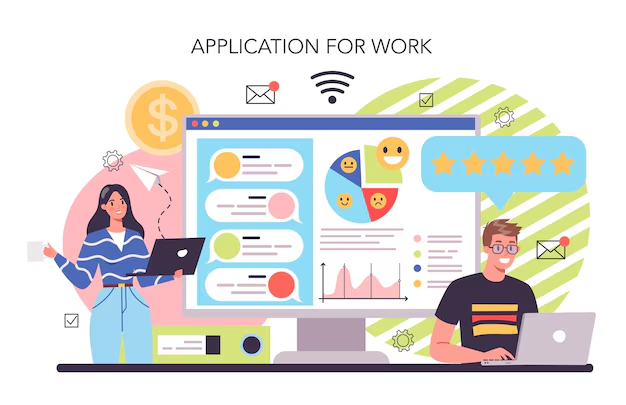
Recommendation systems are AI-powered tools that analyze user behavior and preferences to suggest products, services, or content. These systems are prevalent in e-commerce, streaming services, and social media, enhancing user experience by providing personalized recommendations.
Key Components
- Collaborative Filtering: This method predicts a user’s preferences based on the preferences of similar users.
- Content-Based Filtering: This approach recommends items similar to those a user has liked in the past.
- Hybrid Systems: Combining collaborative and content-based filtering to provide more accurate and diverse recommendations.
Benefits
- Personalization: Recommendation systems tailor suggestions to individual user preferences, enhancing satisfaction and engagement.
- Increased Engagement: Personalized recommendations encourage users to spend more time on platforms, increasing engagement and retention.
- Improved Sales: In e-commerce, recommendation systems drive sales by suggesting relevant products to users.
- Enhanced User Experience: By providing relevant content, recommendation systems improve overall user experience.
Real-World Applications
- E-commerce: Platforms like Amazon use recommendation systems to suggest products based on user browsing and purchase history.
- Streaming Services: Netflix and Spotify recommend movies, shows, and music based on user preferences and viewing/listening history.
- Social Media: Sites like Facebook and Instagram use recommendation systems to show relevant posts, ads, and friends.
- Content Platforms: News and article platforms recommend articles based on user reading habits and interests.
AI in Healthcare
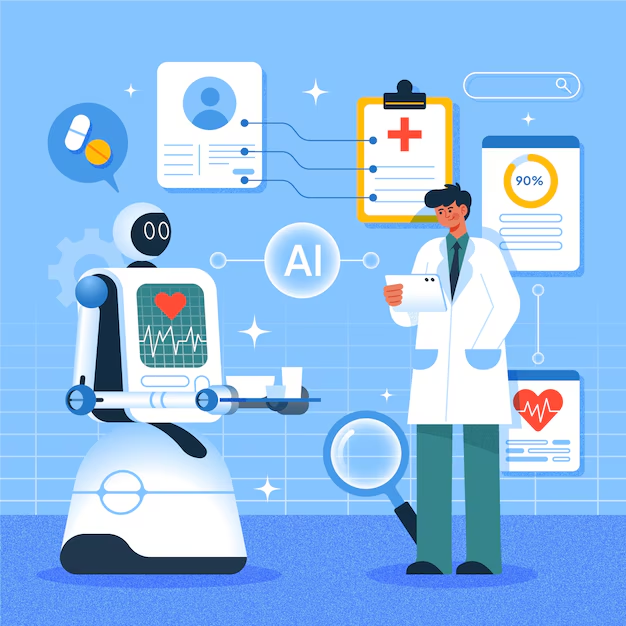
Transforming Healthcare with AI
AI is revolutionizing healthcare by enhancing diagnostics, personalizing treatment, and improving patient care. AI technologies analyze vast amounts of medical data to identify patterns, predict outcomes, and provide insights that support clinical decision-making.
Key Applications
- Diagnostics: AI algorithms can analyze medical images and data to detect diseases such as cancer, diabetic retinopathy, and heart conditions with high accuracy.
- Personalized Medicine: AI helps tailor treatment plans to individual patients based on their genetic information, lifestyle, and medical history.
- Predictive Analytics: AI models predict disease outbreaks, patient deterioration, and hospital readmissions, allowing for proactive intervention.
- Robotics: AI-powered robots assist in surgeries, improving precision and reducing recovery times.
Benefits
- Accuracy: AI improves diagnostic accuracy, leading to earlier and more effective treatments.
- Efficiency: Automating administrative tasks and data analysis streamlines healthcare workflows.
- Personalization: AI enables personalized treatment plans, improving patient outcomes.
- Predictive Capabilities: Predictive analytics help in anticipating and preventing health issues, enhancing patient care.
Real-World Applications
- Medical Imaging: AI algorithms analyze X-rays, MRIs, and CT scans to identify abnormalities and assist radiologists.
- Electronic Health Records (EHRs): AI enhances EHRs by extracting meaningful insights from patient data and suggesting treatment options.
- Telemedicine: AI supports remote consultations by providing diagnostic support and patient monitoring.
- Drug Discovery: AI accelerates the drug discovery process by predicting the efficacy and safety of new compounds.
AI in Transportation

Revolutionizing Transportation with AI
AI is transforming the transportation industry by improving safety, optimizing traffic flow, and enabling autonomous vehicles. These advancements lead to more efficient and reliable transportation systems.
Key Applications
- Autonomous Vehicles: Self-driving cars use AI to navigate, make decisions, and avoid obstacles, reducing the need for human intervention.
- Traffic Management: AI analyzes traffic patterns and optimizes traffic signals to reduce congestion and improve flow.
- Predictive Maintenance: AI predicts vehicle maintenance needs, preventing breakdowns and extending the life of transportation assets.
- Route Optimization: AI algorithms optimize delivery routes, reducing fuel consumption and delivery times.
Benefits
- Safety: AI enhances safety by reducing human error in driving and improving traffic management.
- Efficiency: Optimized routes and predictive maintenance improve the efficiency of transportation systems.
- Cost Savings: AI-driven maintenance and fuel optimization reduce operational costs.
- Environmental Impact: Efficient transportation systems reduce emissions and minimize environmental impact.
Real-World Applications
- Self-Driving Cars: Companies like Tesla, Waymo, and Uber are developing autonomous vehicles that use AI to navigate and drive.
- Smart Traffic Lights: AI-powered traffic lights adjust in real-time to traffic conditions, reducing congestion.
- Logistics: Companies like UPS and FedEx use AI to optimize delivery routes and improve logistics efficiency.
- Public Transportation: AI enhances public transportation by predicting demand, optimizing schedules, and improving service reliability.
AI in Finance
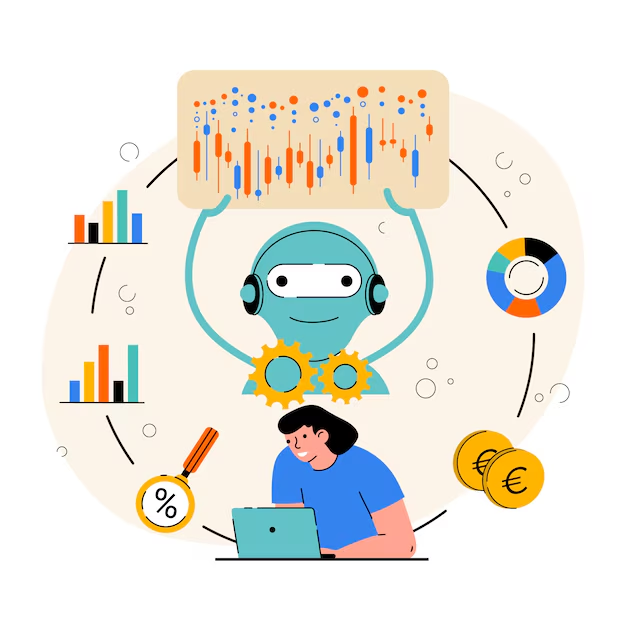
Transforming the Financial Industry
AI is revolutionizing the financial industry by automating processes, enhancing decision-making, and improving customer service. Financial institutions leverage AI to provide more efficient, personalized, and secure services.
Key Applications
- Fraud Detection: AI algorithms analyze transaction patterns to identify and prevent fraudulent activities in real-time.
- Personalized Banking: AI tailors financial products and services to individual customer needs, enhancing user experience.
- Credit Scoring: AI evaluates creditworthiness more accurately by analyzing a broader range of data points.
- Algorithmic Trading: AI-powered trading systems execute high-speed, high-frequency trades, maximizing investment returns.
Benefits
- Enhanced Security: AI improves the detection and prevention of fraud, safeguarding customer assets.
- Efficiency: Automating routine tasks reduces operational costs and increases efficiency.
- Personalization: AI delivers customized financial advice and services, improving customer satisfaction.
- Better Decision-Making: AI analyzes large datasets to provide insights and predictions, supporting strategic decisions.
Real-World Applications
- Fraud Prevention: Banks like HSBC and JPMorgan use AI to monitor transactions and detect fraudulent activities.
- Personal Finance Management: Apps like Mint and YNAB use AI to provide personalized financial advice and budgeting tips.
- Investment Platforms: Robo-advisors like Betterment and Wealthfront offer AI-driven investment management services.
- Customer Service: AI chatbots provide instant customer support, handling inquiries and resolving issues efficiently.
AI in Customer Service

Enhancing Customer Experience
AI is transforming customer service by providing faster, more accurate, and personalized support. AI-driven solutions help businesses improve customer satisfaction and streamline operations.
Key Applications
- Chatbots: AI-powered chatbots handle customer inquiries, provide information, and resolve issues in real-time.
- Virtual Assistants: AI virtual assistants offer personalized support, helping customers with tasks and questions.
- Sentiment Analysis: AI analyzes customer feedback to understand sentiment and improve service quality.
- Predictive Analytics: AI predicts customer needs and behaviors, enabling proactive support and tailored solutions.
Benefits
- 24/7 Support: AI chatbots provide round-the-clock customer service, enhancing accessibility.
- Efficiency: Automating routine inquiries frees up human agents to handle complex issues.
- Personalization: AI tailors responses and recommendations to individual customer preferences.
- Improved Insights: Sentiment analysis and predictive analytics help businesses understand and anticipate customer needs.
Real-World Applications
- E-commerce: Companies like Amazon and eBay use AI chatbots to assist customers with orders, returns, and product inquiries.
- Telecommunications: Providers like AT&T and Verizon employ AI virtual assistants to handle customer service calls and support requests.
- Financial Services: Banks like Bank of America and Wells Fargo use AI to offer personalized banking services and support.
- Hospitality: Hotels and travel agencies use AI to provide personalized recommendations and support to guests and travelers.
Smart Homes and AI

Revolutionizing Home Life
AI is integral to the development of smart homes, enhancing convenience, security, and energy efficiency. Smart home devices use AI to automate tasks and provide intelligent control over household functions.
Key Applications
- Home Automation: AI enables automated control of lights, thermostats, and appliances, optimizing energy usage.
- Security Systems: AI enhances home security with smart cameras, motion detectors, and facial recognition.
- Voice Control: AI-powered voice assistants like Alexa and Google Home control smart home devices and provide information.
- Health Monitoring: AI devices track health metrics and assist in managing wellness routines.
Benefits
- Convenience: AI automates routine tasks, making home management easier and more efficient.
- Energy Efficiency: AI optimizes energy usage, reducing utility costs and environmental impact.
- Enhanced Security: AI improves home security, providing real-time monitoring and alerts.
- Personalized Experience: AI tailors home environments to individual preferences and habits.
Real-World Applications
- Smart Lighting: Systems like Philips Hue use AI to adjust lighting based on time of day and occupancy.
- Thermostats: AI-powered thermostats like Nest learn user preferences and adjust temperatures for optimal comfort and efficiency.
- Security Cameras: AI-enhanced cameras like Ring provide real-time video monitoring and alerts.
- Voice Assistants: Devices like Amazon Echo and Google Nest Hub integrate with smart home systems to control various functions.
AI in Education

Transforming Learning Experiences
AI is revolutionizing education by providing personalized learning experiences, automating administrative tasks, and enhancing teaching methods. AI technologies help educators and students achieve better outcomes through tailored instruction and support.
Key Applications
- Personalized Learning: AI adapts educational content to individual learning styles and paces, enhancing student engagement and comprehension.
- Tutoring Systems: AI-powered tutoring systems provide additional support and resources to students outside of the classroom.
- Automated Grading: AI automates grading of assignments and exams, providing quick and accurate feedback.
- Predictive Analytics: AI analyzes student performance data to identify at-risk students and recommend interventions.
Benefits
- Customized Education: AI tailors learning experiences to individual needs, improving student outcomes.
- Efficiency: Automating administrative tasks and grading frees up time for teachers to focus on instruction.
- Accessibility: AI provides educational resources to students regardless of location, enhancing access to quality education.
- Insightful Analytics: AI provides valuable insights into student performance, helping educators make informed decisions.
Real-World Applications
- Adaptive Learning Platforms: Systems like Khan Academy and Coursera use AI to personalize learning paths for students.
- Intelligent Tutoring Systems: Platforms like Carnegie Learning offer AI-driven tutoring and personalized support.
- Automated Essay Scoring: Tools like Grammarly and Turnitin use AI to evaluate and provide feedback on student writing.
- Predictive Analytics: Educational institutions use AI to track student performance and identify those needing additional support.
Ethical Considerations of AI in Daily Life

Navigating Ethical Challenges
As AI becomes more integrated into daily life, ethical considerations become increasingly important. Ensuring the responsible use of AI involves addressing issues such as privacy, bias, transparency, and accountability.
Key Ethical Issues
- Privacy: AI systems collect and analyze vast amounts of personal data, raising concerns about data privacy and security.
- Bias: AI algorithms can perpetuate and amplify existing biases, leading to unfair outcomes in areas such as hiring, lending, and law enforcement.
- Transparency: The “black box” nature of some AI systems makes it difficult to understand how decisions are made, affecting trust and accountability.
- Accountability: Determining responsibility for AI-driven decisions and actions is a complex challenge, particularly when errors or harms occur.
Addressing Ethical Challenges
- Data Privacy: Implementing robust data protection measures and ensuring transparency in data collection and usage can safeguard privacy.
- Bias Mitigation: Developing and testing AI algorithms with diverse datasets can help reduce bias and promote fairness.
- Transparency: Ensuring that AI systems are explainable and understandable can build trust and accountability.
- Regulation and Oversight: Establishing clear regulations and ethical guidelines can ensure the responsible development and deployment of AI technologies.
Real-World Applications
- Healthcare: Ensuring AI-driven medical diagnostics are free from bias and protect patient privacy.
- Finance: Addressing bias in AI-driven credit scoring and lending decisions.
- Employment: Ensuring fairness in AI-powered hiring and recruitment processes.
- Law Enforcement: Mitigating bias and ensuring transparency in AI-driven policing and surveillance systems.
Future Trends in AI and Machine Learning

Anticipating the Next Wave of Innovation
The future of AI and Machine Learning promises continued advancements and new applications across various industries. Staying informed about emerging trends is crucial for leveraging AI’s full potential.
Key Trends
- Explainable AI: Developing AI systems that provide clear and understandable explanations for their decisions and actions.
- AI Ethics and Governance: Establishing robust frameworks and policies to ensure ethical AI development and deployment.
- AI in Edge Computing: Integrating AI capabilities into edge devices for real-time processing and decision-making.
- Quantum Computing: Leveraging quantum computing to enhance AI capabilities and solve complex problems.
- AI in Creativity: Using AI to augment human creativity in areas such as art, music, and design.
Benefits
- Enhanced Trust: Explainable AI builds trust by making AI decisions transparent and understandable.
- Responsible AI: Ethical governance ensures that AI technologies are developed and used responsibly.
- Real-Time Processing: AI in edge computing enables faster and more efficient data processing and decision-making.
- Advanced Problem-Solving: Quantum computing expands AI’s capabilities, allowing for the resolution of previously intractable problems.
- Creative Collaboration: AI enhances human creativity, leading to innovative and unique artistic expressions.
Real-World Applications
Art and Design: AI tools assist artists and designers in creating new works and exploring innovative concepts.
Healthcare: AI-driven diagnostics and personalized treatments become more transparent and reliable.
Finance: Quantum computing enhances risk analysis and investment strategies.
Manufacturing: AI in edge computing optimizes production processes and improves quality control.
More Blogs:
https://www.frontendinterviewhandbook.com
https://www.simplilearn.com/tutorials/programming-tutorial/front-end-developer-interview-questions
https://www.freecodecamp.org/news/prepare-for-react-technical-interviews
How to Create a WordPress Child Theme Without Plugin: A Step-by-Step Guide
MAKAUT Result Issues: Causes, Solutions, and Tips
MAKAUT Results Latest Update: Result Declaration Good news 22 July
Front end Web Developer Interview Questions and Answers
Which Best Colleges Can I Get If I Have 60,000 Rank in WBJEE?
23 responses to “AI and Machine Learning in Everyday Life”
Practical advice, always appreciate posts that simplify the process! A free resource on Amazon launch strategies (including sourcing and avoiding common errors) could add value to readers. This may help many people.


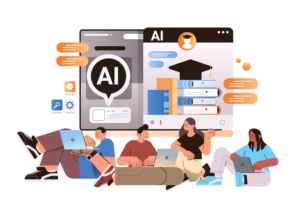

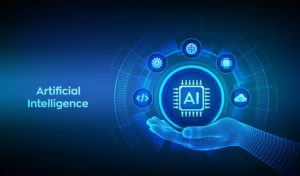


Leave a Reply